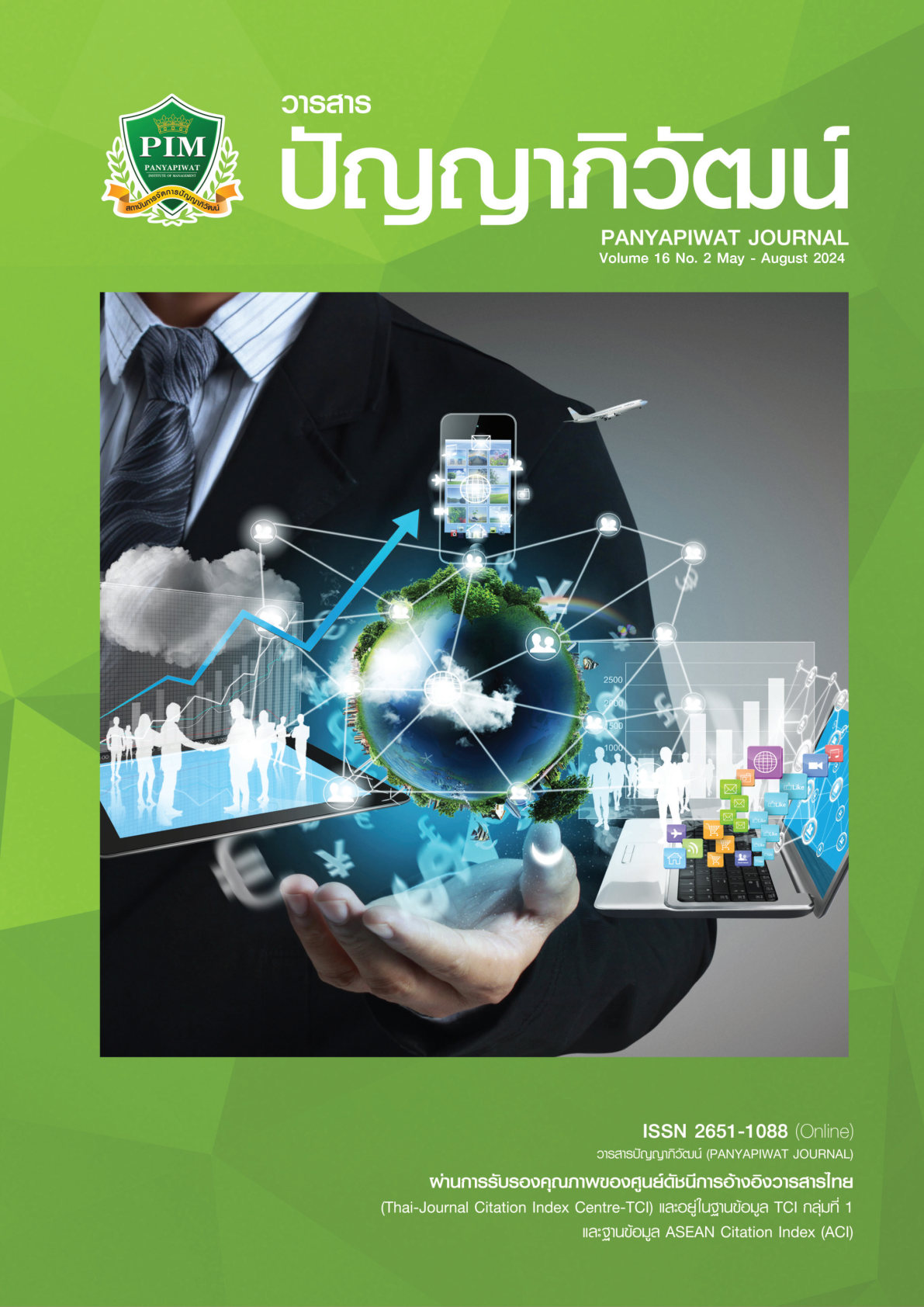THE DEVELOPMENT OF LOCAL TOURISM ROUTES WITH THE PARTICIPATION OF THAI-CAMBODIAN BORDER COMMUNITIES, SURIN PROVINCE
Main Article Content
Abstract
The objectives of this participatory qualitative research were to study the potential of local tourist attractions, to analyze strengths, weaknesses, opportunities, and threats (SWOT), and to study guidelines for the development of local tourism routes with the participation of Thai-Cambodian border communities in the area of Koke Takian sub-district, Kap Choeng district, Surin province. The potential of local tourist attractions was surveyed and analyzed under the concept of sustainable tourism. 30 involved people in the community were interviewed to gather information to conduct a SWOT analysis. In addition, a focused-group discussion with people in the community was arranged to find ways to develop tourism, and the results were presented descriptively.
The findings of the study have revealed that the local tourist attractions in Thai-Cambodian border communities in Surin province are an area with potential for natural resources and local arts and cultures, as well as the unique traditions and ways of life of the people in the community. It is the outstanding area suitable for agriculture. These are considered strengths of the community. The weakness is that the community lacks knowledge and understanding of tourism development planning. However, there is an opportunity as there are community developers, government agencies, and private sector entities with knowledge and the ability to transfer knowledge to the community for tourism development. Moreover, the study has also revealed that a threat to local tourism management is the lack of continuity in managing tourist attractions and the lack of adequate budget support. According to guidelines for successful development of local tourism routes, a management system should be provided by setting up a committee or community organization for local tourism management. Further, people in the community should be developed to have knowledge and understanding about tourism management in the same direction. Finally, there should be a development of leaders as well as creating networks with other communities or other tourist attractions.
Article Details

This work is licensed under a Creative Commons Attribution-NonCommercial-NoDerivatives 4.0 International License.
I and co-author(s) certify that articles of this proposal had not yet been published and is not in the process of publication in journals or other published sources. I and co-author accept the rules of the manuscript consideration. Both agree that the editors have the right to consider and make recommendations to the appropriate source. With this rights offering articles that have been published to Panyapiwat Institute of Management. If there is a claim of copyright infringement on the part of the text or graphics that appear in the article. I and co-author(s) agree on sole responsibility.
References
Charoensheep, J. (2017). The participation in the management of sustainable tourism: A case study of Tham Rong Sub-district Ban Lat District Phetchaburi Province. Information Journal, 16(2), 87-97. [in Thai]
Chatchakul, N. (2007). Tourism industry. Chulalongkorn University Press. [in Thai]
Chiangchai, N. (2015). The identity using to promote tourism in Lampang Province [Maste’s thesis]. Silpakorn University. [in Thai]
Cohen, J. M., & Uphoff, N. T. (1977). Rural development participation: Concept and measures for project design implementation and evaluation. Rural Development Center.
Community Based Tourism Institute. (2017). Benefits that the community receives. www.cbt-i.or.th/?ge=show_pages&gen_lang=20112012094103#.Wn291byWaM8 [in Thai]
Community Organization Development Institute. (2019). “Tatum” a self-managing upstream community. Toward Sustainable Tourism. https://ref.codi.or.th/public-relations/news/16984-2019-06-20-07-57-17 [in Thai]
Dickman, S. (1996). Tourism: An introductory text. Hodder Education.
Institute for Innovation and Data Governance. (2022). Revealing statistics on the tourism situation in Thailand. https://digi.data.go.th/showcase/thailand-tourism-statistics/ [in Thai]
Kasperson, J., & Breitbart, M. W. (1974). Participation, decentralization and advocacy planning. Resource paper (No. 25). Washington D.C. Association of American Geographer.
Kunurat, K., Yongwanit, S., & Charoenwanit. P. (2003). Developing the tourism potential of the northeastern region (Research report). Khon Kaen University. [in Thai]
Ministry of Tourism and Sports. (2015). Tourism policy. www.mots.go.th/ewtadmin/ewt/mots_web57/ewt_news.php?nid=5953 [in Thai]
Ministry of Tourism and Sport. (2022). Tourism statistics 2022. https://www.mots.go.th/news/category/655 [in Thai]
Pongnak, I. (2015). The community identity of the ancient town of U-Thong, Suphanburi Province [Master’s thesis]. Chulalongkorn University. [in Thai]
Public Relations Department Press Office. (2019). Kap Choeng District, Surin Province. Organization with Outstanding Social Activities in 2019. https://thainews.prd.go.th/th/news/detail/TCATG201102185448460 [in Thai]
Puengcham, C., Hanput, M., Promsaka, N., & Sakolnakorn, T. (2019). The analysis of strengths, weaknesses, opportunities and threats related to tourism development at Cha-Am Beach, Petchaburi. http://www.mis.ms.su.ac.th/MISMS01/PDF01/1974_ 20190626_p_27.pdf [in Thai]
Srilachai, A. (2016). Guide lines for sustainable tourism management for community-based tourism, A case study of Ban Kokmuang, Jorakhemak, Prakhonchaidistrict, Buriram Province. Graduate Journal Valaya Alongkorn Rajabhat University under the Royal Patronage, 12, 218-229. [in Thai]
Suansri, P., & Yijoho, S. (2013). Community tourism standards manual. Community Based Tourism Institute, Payap University. [in Thai]
Suwanpimon, K., Koykitcharoen, D., Trisuk, W., Chimpimol, S., Jaiho, N., & Chotviriyakul, W. (2004). A study of the efficiency of services in the transportation system in Phuket Province, Phang Nga Province and Krabi Province. Thailand Research Fund. [in Thai]
Thongma, W. (2013). Community Based Tourism (CBT) for improving the quality of life communities in forest land areas. School of Tourism Development, Maejo University. [in Thai]
Tiapaiboon, P. (2014). Potential of community-based ecotourism destinations, Ban Hua Non Wat, Mae Tom Sub-district, Bang Klam District, Songkhla Province [Master’s thesis]. Department of Environmental Management, Prince of Songkla University. [in Thai]
UNWTO. (1997). Tourism 2020 vision. UNWTO.
Wannathanom, C. (2009). Tourism industry. Wirat Education. [in Thai]


